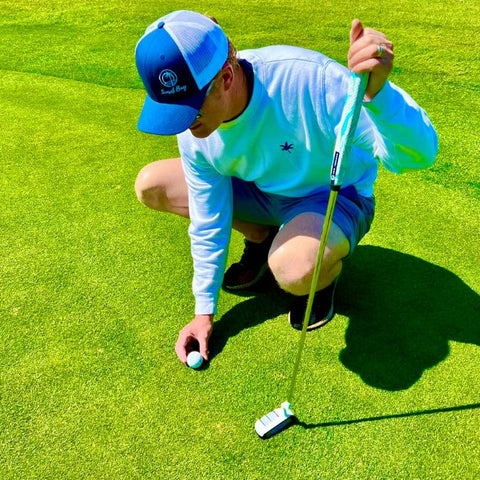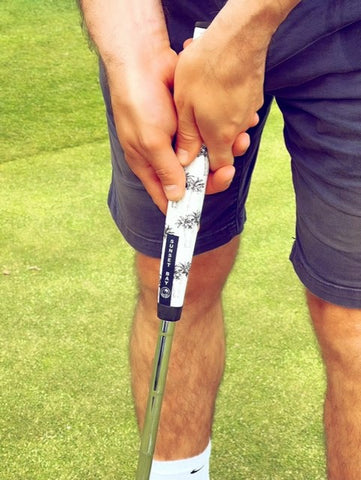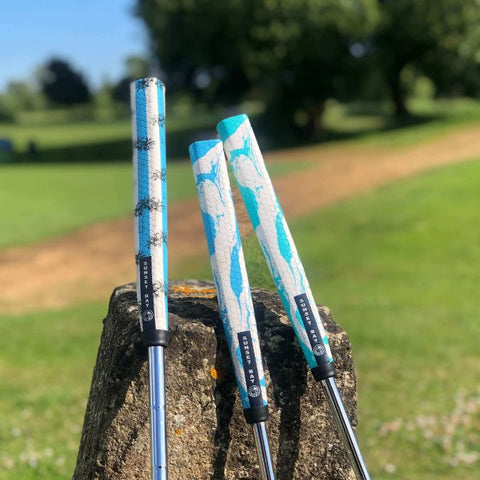
The Importance of Changing Your Putter Grip
The Importance of Changing Your Putter Grip
In golf, every part of your gear affects how well you play.
While people focus a lot on clubs and swings, one thing that's really important but often gets forgotten about is the grip on your putter.
As the connection point between golfer and club, the putter grip plays a crucial role in ensuring stability, control, and consistency in your putting stroke.
We explore why it's important to change your putter grip regularly, how to recognise when it's time for a change, tips for finding the right grip, the process of regripping a putter, and the benefits of Sunset Bay putter grips.

How often should you change your putter grip?
The frequency at which you should change your putter grip depends on several factors, including how often you play, the conditions in which you play, and the type of grip you use.
As a general rule of thumb, golfing experts recommend replacing your putter grip at least once a year or every 40-50 rounds of golf.
However, if you're an avid golfer who plays frequently or if you notice signs of wear and tear on your grip, such as cracks, smooth spots, or loss of tackiness, it may be time to replace it sooner.
Signs it's time for a new grip
Recognising when it's time to change your putter grip is essential for maintaining optimal performance on the green. Here are some telltale signs that indicate your grip may need replacing:
-
Loss of tackiness: Over time, the materials used in putter grips can deteriorate, leading to a loss of tackiness or grip texture. If you find your hands slipping or sliding during your putting stroke, it's a clear indication that your grip has worn out.
-
Visible wear and tear: Cracks, splits, or smooth spots on the surface of your grip are signs of extensive use and indicate that it's no longer providing the necessary support and stability.
-
Inconsistent performance: If you notice a decline in your putting performance, such as missed putts or inconsistent distance control, it could be attributed to an old or worn-out grip affecting your feel and control over the putter.

The impact of an old grip on your game
Neglecting to change your putter grip when it's past its prime can have detrimental effects on your game.
An old, worn-out grip compromises your ability to maintain a steady and controlled putting stroke, leading to inconsistencies in both direction and distance.
Without proper grip traction, you're more prone to mishits, resulting in missed putts and higher scores on the green.
Additionally, an uncomfortable or deteriorating grip can cause discomfort and fatigue in your hands, further impacting your performance and enjoyment of the game.
Finding the right grip
Choosing the right putter grip is a highly personal decision that depends on factors such as hand size, grip preference, and feel. With a range of grip options available on the market, ranging in size, shape, texture, and material, it's important to experiment and find one that suits your individual needs and preferences.
Whether you prefer a traditional pistol grip, a thicker padded grip for added stability, or a softer, tackier material for enhanced feel, there's a grip out there to cater to every golfer's unique playing style.

Regripping your putter
Regripping your putter is a relatively simple process that can be done at home with the right tools and a bit of patience. Here's a basic overview of how to regrip your putter:
-
Gather your materials: You'll need a new putter grip, grip tape, grip solvent, a utility knife or grip cutter, and ideally a vice or clamp to secure the club.
-
Remove the old grip: Use a utility knife or grip cutter to carefully cut away the old grip, being cautious not to damage the shaft or grip tape underneath.
-
Clean the shaft: Once the old grip is removed, clean the shaft thoroughly to remove any residue or adhesive left behind.
-
Apply grip tape: Wrap double-sided grip tape around the shaft, ensuring full coverage and a secure bond with the new grip.
-
Apply grip solvent: Apply grip solvent to the inside of the new grip and the exposed grip tape on the shaft to facilitate easy installation.
-
Install the new grip: Slide the new grip onto the shaft, aligning it properly with the clubface, and make any final adjustments to ensure it's positioned correctly.
-
Let it dry: Allow the grip solvent to dry completely, ensuring a secure and stable bond between the grip and the shaft.

Why Sunset Bay Putter Grips?
When it comes to selecting a putter grip that combines performance, durability, and style, Sunset Bay putter grips stand out as a top choice among golfers of all skill levels
In golf every aspect of your equipment plays a vital role in your performance on the green. While much emphasis is often placed on selecting the right clubs and mastering the perfect swing, one often-overlooked component that can significantly impact your game is the putter grip.
As the connection point between golfer and club, the putter grip plays an important role in ensuring stability, control, and consistency in your putting stroke. In this blog, we'll explore why it's important to change your putter grip regularly, how to recognize when it's time for a change, tips for finding the right grip, the process of regripping a putter, and the benefits of Sunset Bay putter grips.
Find your perfect grip with Sunset Bay
Other articles of interest:
Perfect Your Golf Swing: How to Fix Basic Errors
Top Exercises to Improve Your Golf Game
Putter Grip Styles: What Works Best for You?
